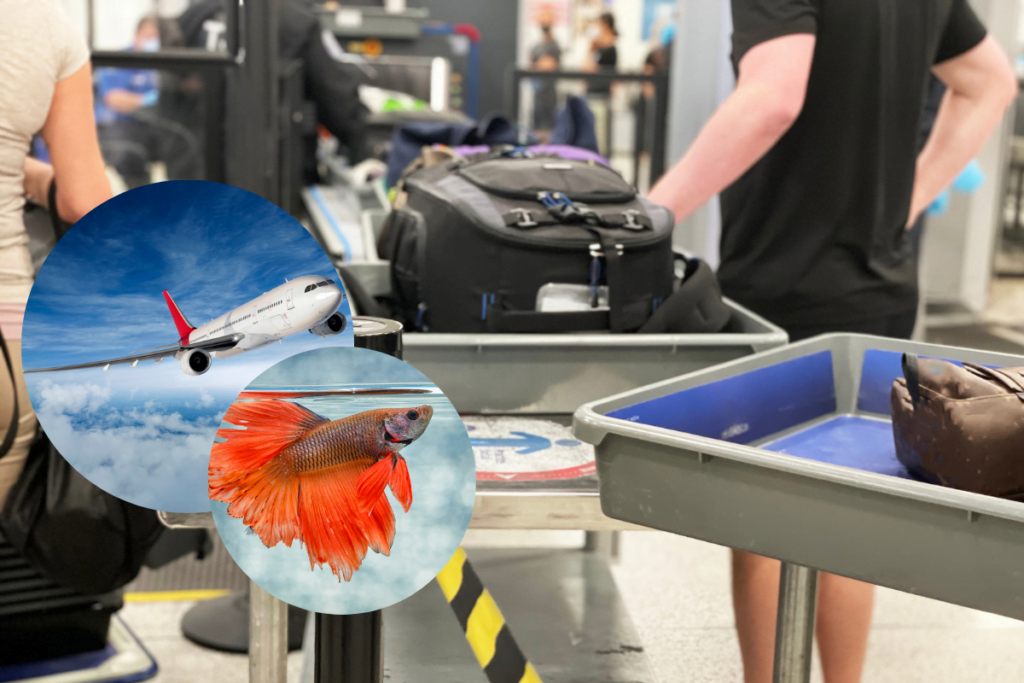Table of Contents
Traveling with a pet fish requires careful planning and preparation to ensure their safety and well-being. Whether you’re moving to a new home or going on a vacation, knowing how to travel with a pet fish can make the journey smoother for both you and your aquatic friend. This guide provides seven essential tips to help you transport your pet fish safely and stress-free.

Top Tips on How to Travel with a Pet Fish
1. Choose the Right Container
When traveling with a pet fish, selecting the right container is crucial. Use a sturdy, leak-proof container with a secure lid. Plastic bags, fish transport bags, or small plastic containers with lids work well. Make sure the container is clean and free from any contaminants. For more details on containers, visit The Spruce Pets Transport Guide.
2. Use Proper Water Conditions
Fill the travel container with water from the fish’s original tank to minimize stress. Ensure the water temperature is stable and matches the fish’s current environment. Avoid using tap water unless it’s treated to remove chlorine and other harmful substances. For water condition tips, see PetMD Transport Fish.
3. Secure the Container
Secure the container in your vehicle to prevent it from tipping over or moving around during the trip. Place it in a stable area, such as the floor of the car or a padded seat. Use seat belts or padding to keep it in place. For more on securing the container, visit PetCoach Transporting Fish.
4. Maintain Oxygen Levels
Ensuring adequate oxygen levels is vital when traveling with a pet fish. If using a plastic bag, leave some air at the top or use a portable air pump. For longer trips, consider using a battery-powered air pump to keep the water aerated. For oxygen maintenance tips, see Aquarium Co-Op Moving Fish.
5. Monitor Temperature
Keep an eye on the water temperature during the journey. Avoid placing the container in direct sunlight or near air conditioning vents. Use a portable heater or cooler if necessary to maintain a stable temperature. For temperature monitoring tips, visit Fishkeeping World Moving Guide.
6. Minimize Stress
Reduce stress for your fish by minimizing handling and keeping the environment as calm as possible. Avoid sudden movements and loud noises. Covering the container with a towel can help keep the environment dark and calm, which can reduce stress levels. For stress reduction tips, see Aqueon Transporting Fish.
7. Acclimate Upon Arrival
Once you reach your destination, acclimate your fish to its new environment slowly. Float the transport container in the new tank to equalize the temperature. Gradually add small amounts of the new tank water to the container over a period of time before releasing the fish. For acclimation tips, visit The Spruce Pets Acclimate Fish.
Conclusion on How to Travel with a Pet Fish
Traveling with a pet fish requires careful preparation and attention to detail. By following these seven essential tips on how to travel with a pet fish, you can ensure a safe and stress-free journey for your aquatic companion. Proper planning and care can help your fish arrive at their new home healthy and happy. For more pet care tips, check out our Pet Care Guide.
FAQs on How to Travel with a Pet Fish
How long can a fish stay in a transport container?
Most fish can stay in a transport container for up to 8 hours, but it’s essential to monitor oxygen levels and water temperature during the trip.
Can I use tap water for transporting my fish?
Avoid using untreated tap water. Use water from the fish’s current tank or treated tap water to remove chlorine and other harmful substances.
What should I do if the trip is longer than a few hours?
For longer trips, consider using a portable air pump to maintain oxygen levels and monitor the water temperature closely to ensure a stable environment.
How can I reduce stress for my fish during travel?
Minimize handling, avoid sudden movements and loud noises, and cover the container with a towel to keep the environment dark and calm.
Is it necessary to acclimate my fish to the new tank after travel?
Yes, acclimating your fish to the new tank is crucial. Float the transport container in the new tank and gradually add tank water to the container before releasing the fish.
Can I feed my fish before traveling?
It’s best to avoid feeding your fish 24 hours before travel to reduce waste in the water and minimize stress during the trip.











